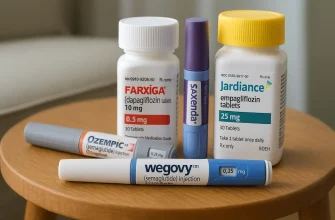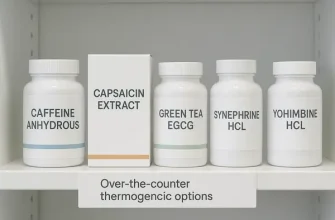Asthma medications are life-saving treatments that help people with asthma breathe easier and live fuller lives. Whether you’re managing mild symptoms or severe flare-ups, the right meds can make the difference between wheezing through the day and taking a deep, satisfying breath. These drugs come in various forms: inhalers, tablets, injections, and nebulizers—each designed to address specific aspects of the condition.
Allergens (Pollen, Dust Mites, Pets)
These are the most common triggers, especially in allergic asthma.
Best Treatment: Inhaled corticosteroids + Omalizumab (Xolair)
Effectiveness:
Exercise-Induced Asthma
Physical activity, especially in cold air, can lead to airway tightening.
Best Treatment: Short-acting beta-agonists (Albuterol) before exercise
Effectiveness:
Cold Air and Weather Changes
Sudden temperature drops can irritate airways, causing flare-ups.
Best Treatment: LABA + corticosteroid combo (e.g. Symbicort)
Effectiveness:
Air Pollution and Smoke
Smog, wildfire smoke, or fumes can aggravate chronic inflammation.
Best Treatment: Inhaled corticosteroids + leukotriene modifiers
Effectiveness:
Stress and Emotional Triggers
Strong emotions can impact breathing and trigger asthma indirectly.
Best Treatment: Long-term controller meds + monitoring with apps
Effectiveness:
Roughly 25 million Americans—about 1 in 13—live with asthma, according to the CDC ⧉. It’s not a one-size-fits-all condition, and neither is its treatment. From short-acting bronchodilators that offer quick relief to long-term corticosteroids and biologics, the goal is always the same: control inflammation, ease breathing, and prevent attacks.
Types of Asthma Medications and Their Roles
There are two primary categories of asthma drugs: quick-relief (rescue) medications and long-term control medications. Knowing when and how to use each is crucial.
1. Frequent Severe Flare-ups
You’ve had two or more asthma exacerbations in the last year despite using daily controller meds.
2. High Eosinophil Count
Your blood test shows elevated eosinophils—a key marker in eosinophilic asthma.
3. Need for Oral Steroids
You require oral corticosteroids (like prednisone) more than twice a year to manage flare-ups.
4. High IgE Levels
Lab results indicate elevated IgE—an immune protein linked to allergic asthma.
5. Symptoms Despite Proper Inhaler Use
You continue to experience wheezing, coughing, or chest tightness even with correct inhaler technique and daily use.
Quick-Relief Medications
These are the go-to drugs during an asthma attack. They include short-acting beta-agonists (SABAs) like albuterol (ProAir HFA, Ventolin HFA), which work within minutes to relax airway muscles. These inhalers are portable, fast-acting, and typically effective within 5–10 minutes. On a scale of 1 to 10, their efficacy for immediate symptom relief rates around 8–9.
Long-Term Control Medications
These are used daily to reduce inflammation and prevent attacks:
- Inhaled corticosteroids (e.g., fluticasone, budesonide) are first-line treatments, offering strong anti-inflammatory action.
- Leukotriene modifiers like montelukast (Singulair) help block inflammation-causing chemicals.
- Long-acting beta-agonists (LABAs) are used in combination with steroids.
- Theophylline, though older, is still used for some patients.
Reyus Mammadli, a medical consultant, emphasizes, “Consistent use of long-term controllers is non-negotiable for moderate to severe asthma. Too many patients rely only on rescue meds—and that’s risky.”
Biologic Therapies: The Future Is Now
Biologic medications are changing the game for severe asthma sufferers. These advanced treatments work by targeting very specific parts of the immune system that contribute to inflammation in the lungs. Think of them as laser-guided therapies—they don’t blanket your entire system like steroids, but instead zero in on the root causes that trigger asthma in certain people.
Here’s a clearer breakdown:
- Omalizumab (Xolair): Designed for patients with allergic asthma, this medication blocks immunoglobulin E (IgE), which plays a major role in allergic responses. By lowering IgE levels, it reduces sensitivity to allergens like dust mites, pet dander, and mold. It’s ideal for patients whose asthma is triggered seasonally or year-round by environmental allergens.
- Mepolizumab (Nucala) and Benralizumab (Fasenra): These are tailored for people with high eosinophil levels—a type of white blood cell that causes airway swelling. These biologics reduce the number of eosinophils, effectively calming down the immune system and making asthma attacks less frequent and less severe.
- Dupilumab (Dupixent): This option is unique because it blocks two key inflammatory pathways—interleukin-4 and interleukin-13. That makes it helpful for people with both asthma and other inflammatory conditions like eczema. Dupixent is often chosen when multiple symptoms need to be addressed simultaneously.
Biologics are administered via injection—sometimes at home, sometimes in a clinic—usually once every 2 to 8 weeks. They aren’t for everyone, but for those with moderate-to-severe asthma who haven’t responded to traditional meds, these therapies can be life-changing.
These are given via injection every 2–8 weeks and can significantly reduce hospitalizations and the need for oral steroids ⧉. In terms of precision and efficacy, biologics score 9–10 for eligible patients. However, they are expensive, ranging from $1,000 to $3,000 per month without discounts or assistance programs.
Diagnostic Tools and Medication Customization
Correct diagnosis is half the battle. Doctors use a combination of:
- Spirometry: measures airflow and lung function (accuracy: 8/10; cost: ~$60–$100)
- Peak flow meters: home-use tools to monitor daily changes (accuracy: 6/10; cost: ~$20–$40)
- FeNO testing (fractional exhaled nitric oxide): detects airway inflammation (accuracy: 9/10; cost: ~$200–$300)
- Allergy testing: helps identify triggers to personalize treatment
By using these tools, physicians can better tailor medication regimens—essential in reducing over- or under-treatment.
Real-Life Stories: Asthma in Action
A 32-year-old woman from Phoenix, AZ, who struggled with frequent night-time attacks, found relief after her doctor added Dupixent to her regimen. Within 3 months, her ER visits dropped to zero.
A 15-year-old high school athlete in Chicago, previously reliant on albuterol multiple times daily, transitioned to a combination of fluticasone/salmeterol and saw a major improvement in stamina and reduced school absences.
These aren’t rare wins—they’re real results stemming from smart, evidence-based medication choices.
Side Effects: What You Need to Know
No medication is without its downsides. Common side effects include:
- Inhaled steroids: hoarseness, oral thrush (use spacers and rinse mouth)
- LABAs: possible heart palpitations
- Leukotriene modifiers: linked to mood changes in some individuals
- Biologics: injection site reactions, rare allergic responses
It’s critical to report new symptoms to your doctor promptly. As Reyus Mammadli advises, “Patients shouldn’t hesitate to speak up. Medication should help, not harm.”
The Tech Revolution: Smart Inhalers and Apps
Asthma management has officially entered the 21st century—with tech doing more than just tracking your steps. Smart inhalers and health apps are giving patients the power to take control of their condition in ways that were unthinkable a decade ago. Let’s break it down into what it is, how it works, and why it matters.
What Are Smart Inhalers?
Imagine your rescue inhaler with a built-in memory and GPS. That’s the idea behind smart inhalers. Devices like those from Propeller Health or HeroTracker Sense attach to regular inhalers and monitor how often and when you use them. Every puff is recorded, and data is automatically sent to a mobile app. It’s like having a digital diary that never forgets—and never judges.
How It Works
The device uses Bluetooth to sync with a smartphone app. Once connected, the app tracks medication usage, records symptoms, and even notes environmental factors like pollen count or air quality. Many apps can alert you if your usage suddenly spikes—a potential red flag that your asthma is getting worse.
This real-time feedback helps patients stay on top of their treatment plans. It also allows physicians to access comprehensive data between visits, leading to smarter, more personalized adjustments.
Benefits You’ll Notice
- Better adherence: Studies show a 30–58% improvement in medication compliance when smart inhalers are used ⧉.
- Fewer ER visits: Early intervention often prevents emergencies.
- Convenience: Reminders and notifications are built into many apps.
- Peace of mind: You (and your doctor) always know what’s going on.
Reyus Mammadli, medical consultant, explains, “Patients often don’t realize they’re underusing or overusing their inhalers. Smart inhalers make those patterns crystal clear.”
What About Apps?
Apps like AsthmaMD, MyAsthma, and CareClinic do more than track usage—they serve as comprehensive management platforms. Users can:
- Log symptoms, triggers, and peak flow readings
- Create medication schedules
- Generate reports to share with their healthcare provider
- Receive personalized health insights
These apps are user-friendly and often free or low-cost (under $10/month for premium features). Think of them as a health journal, calendar, and alert system all in one.
Is It Worth It?
For many patients, absolutely. The upfront cost of a smart inhaler sensor ranges from $50–$100, but some are covered by health programs or asthma initiatives. The payoff comes in the form of fewer exacerbations, better long-term control, and reduced healthcare costs down the road.
And let’s be honest—when your phone reminds you to use your controller med at 7 a.m., you’re more likely to follow through than if you just try to remember.
How Often Should You Use Them?
Ideally, smart inhalers and apps should be used daily, just like any other asthma management tool. They’re most effective when consistently integrated into your routine. Once you get the hang of it, it’s as natural as checking the weather before leaving the house.
So, whether you’re tech-savvy or just getting started, digital tools are making asthma management more intuitive, reliable, and—dare we say—easier to breathe with.
Pediatric and Geriatric Considerations
Kids and seniors have unique challenges. For children, taste, device technique, and dosage accuracy matter. Pediatric inhalers often include spacers with masks. For the elderly, polypharmacy and cognitive issues may interfere with adherence. Nebulizers or breath-activated inhalers can help.
Healthcare providers must customize both the choice of drug and delivery method for these age groups to ensure safety and effectiveness ⧉.
Month 0: Initial Diagnosis
Pulmonary tests confirm asthma. Trigger identification begins. Controller meds may be prescribed.
Month 1: Medication Plan Adjustment
Response to initial therapy evaluated. Dosage or medication type may be changed.
Month 3: Therapy Optimization
Symptom pattern reviewed. Smart inhalers or biologics considered for uncontrolled asthma.
Month 6: Stability Monitoring
Reduction in flare-ups expected. FeNO or spirometry repeated. Patient education reinforced.
Month 12: Long-Term Control
Full-year review. Personalized plan updated. Possible medication step-down if stable.
Practical Comparison Table of Common Asthma Medications
| Medication Type | Example | Onset Time | Duration | Form | Avg. Monthly Cost |
|---|---|---|---|---|---|
| SABA (Rescue) | Albuterol | 5–10 min | 4–6 hrs | Inhaler | $30–$60 |
| Inhaled Corticosteroid | Fluticasone | Hours | 12–24 hrs | Inhaler | $100–$200 |
| LABA + Steroid Combo | Advair, Symbicort | 30 min | 12 hrs | Inhaler | $250–$350 |
| Biologic | Dupixent, Xolair | Days–Weeks | Weeks | Injection | $1000–$3000 |
SABA (Rescue Inhalers)
Short-acting beta-agonists (SABAs) like albuterol are the emergency firefighters of asthma care. They act fast by relaxing the muscles around your airways, opening things up within minutes. These are the inhalers you grab when you feel that telltale tightness in your chest. While they’re not meant for everyday use, they’re crucial for quick relief during an attack. Think of them as your asthma “EpiPen”—quick, powerful, but only for urgent use.
Inhaled Corticosteroids
These are the quiet heroes in your daily routine. Used regularly, inhaled corticosteroids reduce inflammation in the lungs, making your airways less sensitive to triggers like pollen, dust, or exercise. Over time, they help prevent asthma attacks altogether. They don’t provide immediate relief, but their long-term benefits are significant. Fluticasone and similar medications are widely prescribed and considered first-line therapy for persistent asthma.
LABA + Steroid Combination Inhalers
These combination inhalers bring together the anti-inflammatory power of steroids and the long-lasting airway-opening effects of long-acting beta-agonists (LABAs). While the steroid component keeps inflammation at bay, the LABA helps maintain open airways throughout the day. They’re typically prescribed for people whose asthma isn’t well-controlled by inhaled steroids alone. These inhalers are popular because they simplify treatment—two benefits in one puff.
Biologic Therapies
Biologics are the heavy-hitters reserved for more complex cases of asthma, especially when traditional meds aren’t enough. They target specific immune responses that trigger inflammation, working more like precision-guided missiles than general sprays. Given by injection, these therapies are tailored for patients with allergic or eosinophilic asthma. They’re powerful and often life-changing for those who qualify. Due to their cost and specificity, they’re generally managed through specialist care.
Editorial Advice
Asthma management is no longer limited to just puff-and-go solutions. Today’s medications are personalized, tech-enhanced, and increasingly biologically targeted. The right combination of diagnostics, drugs, and digital support can radically improve quality of life.
Reyus Mammadli, medical consultant, recommends, “Asthma care needs regular check-ins, not just when things get rough. Prevention is far easier than a trip to the ER.”
Pro tip? If your rescue inhaler is becoming your daily companion—it’s time for a medication review. Stay ahead, stay informed, and breathe better, one step at a time.








